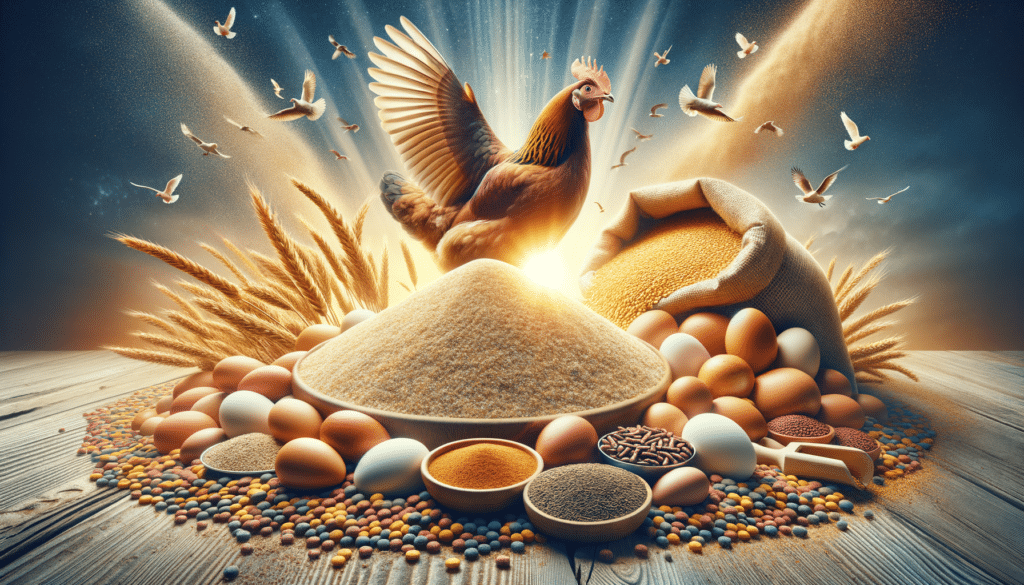Bulk Chicken Feed: Economical Feeding for Your Flock
Purchasing chicken feed in bulk is an economical strategy that can significantly reduce the cost of feeding your flock. This approach not only saves money but also ensures that you have a consistent supply of feed on hand, reducing the risk of running out. Bulk feed options are particularly beneficial for larger flocks or community farms where the demand for feed is high.
When considering bulk purchases, it is important to evaluate the nutritional content of the feed. Look for feeds that offer a balanced mix of proteins, vitamins, and minerals to support the health and productivity of your chickens. Common ingredients in quality bulk feeds include corn, soybeans, and wheat, each contributing essential nutrients.
Another advantage of buying in bulk is the potential for customization. Many suppliers offer the option to tailor the feed mix to the specific needs of your flock, whether you are raising layers, broilers, or dual-purpose breeds. This flexibility can help optimize the health and productivity of your chickens.
In summary, bulk chicken feed is a cost-effective and convenient option for those managing larger flocks. By ensuring the feed meets the nutritional needs of your chickens, you can maintain a healthy and productive flock without breaking the bank.
High Protein Chicken Feed: Boosting Growth and Health
High protein chicken feed is crucial for the growth and development of chickens, particularly during the early stages of life and for meat-producing breeds. Protein is essential for muscle development, feather growth, and overall health, making it a key component of any chicken’s diet.
Feeds with a high protein content are typically composed of ingredients like fish meal, soybean meal, and canola meal. These ingredients provide a rich source of amino acids, which are the building blocks of proteins. For young chicks, starter feeds with a protein content ranging from 18% to 24% are recommended to support rapid growth.
As chickens mature, their protein requirements may change. Layers, for instance, benefit from a slightly lower protein content, around 16% to 18%, which supports egg production without compromising health. It’s important to adjust the feed according to the specific needs of your flock to ensure optimal health and productivity.
Incorporating high protein feed into your chickens’ diet can lead to stronger, healthier birds and improved production outcomes. Whether you’re raising chickens for meat or eggs, ensuring they receive adequate protein is essential for their well-being.
Layer Feed Options: Supporting Egg Production
Layer feed is specially formulated to meet the nutritional needs of hens that are actively laying eggs. This type of feed is enriched with higher levels of calcium and vitamins to support eggshell strength and overall reproductive health.
Calcium is a critical component of layer feed, as it helps produce strong eggshells. Feeds often include limestone or oyster shell as a source of calcium. In addition to calcium, layer feeds are fortified with vitamins such as vitamin D, which aids in calcium absorption, and vitamin E, which supports reproductive health.
When selecting a layer feed, consider the age and breed of your hens, as different breeds may have varying nutritional requirements. Some layer feeds are designed for specific breeds or ages, providing a tailored approach to nutrition that can enhance egg production and quality.
Offering a variety of layer feed options can also be beneficial. Some poultry keepers choose to supplement commercial layer feeds with natural ingredients such as greens, grains, and kitchen scraps, providing a more diverse diet. However, it is important to ensure that any additional food sources do not disrupt the nutritional balance of the feed.
In conclusion, selecting the right layer feed is crucial for maintaining the health and productivity of your laying hens. By providing a balanced diet rich in essential nutrients, you can support optimal egg production and ensure the well-being of your flock.


